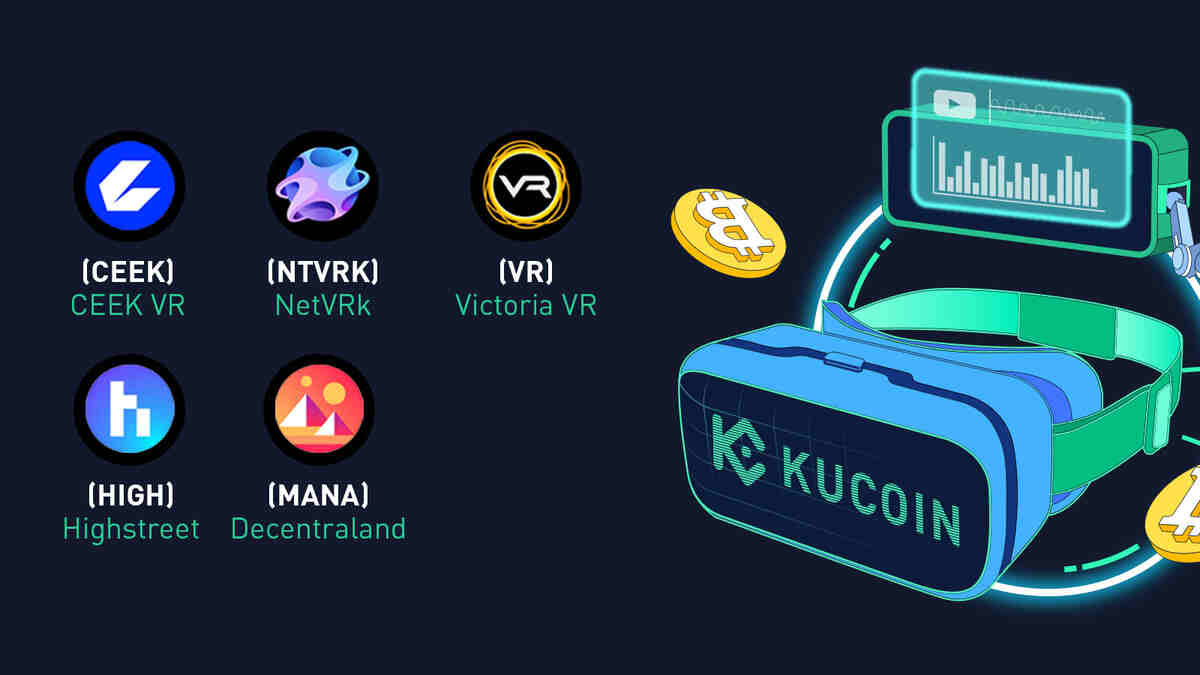Cryptocurrency, vs. Augmented Reality: The Best Powerful Digital Technology

Cryptocurrency, vs. Augmented Reality as we witness the rapid expansion of digital technologies. The most intriguing and then transformative fields are cryptocurrency and extended reality. Including both virtual reality (VR) and then augmented reality (AR)). These technologies, while different in their primary functions.a common trajectory of revolutionizing industries, reshaping consumer behaviors, and creating new markets. This article, we will explore the evolving roles of cryptocurrency, VR, and AR, examining how they converge and where they diverge. More importantly, we’ll assess their potential to define the future of digital ecosystems.
Understanding Cryptocurrency

Cryptocurrency, a form of digital or virtual currency, is powered by blockchain technology. It offers a decentralized and secure way of conducting transactions, making it a game changer in the world of finance. The most popular cryptocurrencies, such as Bitcoin and Ethereum, have grown in prominence due to their ability to bypass. Traditional financial institutions are offering a peer-to-peer system that eliminates the need for intermediaries.
Cryptocurrency is not merely about digital money but represents a significant shift in how value is exchanged. The key features that distinguish cryptocurrencies from traditional currencies include:
- Decentralization: Most cryptocurrencies operate on decentralized networks, meaning no single entity, government, or institution controls them.
- Security: Powered by cryptographic techniques, cryptocurrencies offer enhanced protection from fraud, hacking, and other cyber threats.
- Transparency: Blockchain technology ensures all transactions are recorded on a public ledger, providing full visibility to users while maintaining anonymity.
- Smart Contracts: In addition to functioning as currencies, some blockchains (like Ethereum) allow users to create smart contracts. Which are self-executing contracts where the terms are written directly into the code. This has profound implications for legal, business, and financial industries.
Impact of Cryptocurrency on Various Industries
Cryptocurrency is not confined to the finance world; its application spans a variety of sectors:
- Gaming: Cryptocurrencies are increasingly used in online gaming platforms, allowing players to purchase. The game assets or even earn crypto rewards through gameplay.
- Real Estate: Blockchain technology is revolutionizing property transactions by facilitating smart contracts. That reduce the need for middlemen, thus expediting and securing property sales.
- Healthcare: Blockchain is being implemented to ensure secure and then tamper-proof storage of medical records. Enabling more efficient and then trustworthy healthcare systems.
- Supply Chain: Blockchain’s transparency ensures that every step in a supply chain can also be verified. Reducing fraud and then inefficiencies in industries like food and luxury goods.
Virtual Reality: A New Dimension of Experience
Virtual reality (VR) refers to immersive experiences where users are fully immersed in a simulated digital environment. Through the use of VR headsets like the Oculus Rift or HTC Vive, users are transported to completely new worlds—whether for entertainment, education, or training purposes.
How Virtual Reality is Redefining Industries
Today, industries are leveraging VR to enhance experiences, improve training, and then offer innovative solutions:
- Healthcare: VR is being used for virtual surgeries, training medical students, and even treating patients with conditions like PTSD by immersing them in therapeutic environments.
- Education: Through VR, students can also explore historical events, visit distant planets, or walk through architectural blueprints, creating a more interactive and then engaging learning environment.
- Real Estate: Buyers can also take virtual tours of properties without ever leaving their homes, enabling global participation in local markets.
- Retail: Stores can also offer customers immersive shopping experiences, where users can also try on clothes or accessories in virtual dressing rooms before making a purchase.
The Challenges of Virtual Reality
While VR offers vast potential, it faces several hurdles:
- Cost: High-quality VR equipment remains expensive, which limits its accessibility to a wider audience.
- Motion Sickness: Some users experience motion sickness or disorientation when using VR for extended periods, an issue that developers continue to address.
- Content Development: Creating immersive VR content requires significant resources and expertise, limiting the amount of high-quality experiences available to consumers.
Augmented Reality: Merging Digital and Real Worlds
In contrast to VR, augmented reality (AR) overlays digital elements onto the real world. One of the most widely known examples of AR is Pokémon GO, where users can also capture virtual creatures that appear in real-world settings through their smartphone screens. AR can also be experienced through devices such as smartphones, tablets, or AR glasses like the Microsoft HoloLens.
Practical Applications of Augmented Reality
AR’s ability to blend the physical and then digital worlds opens up numerous applications across industries:
- Retail: Brands like IKEA allow users to visualize how furniture will look in their homes before purchasing, using AR to overlay digital images of the furniture onto real-world spaces.
- Healthcare: AR assists surgeons by projecting critical information, such as patient vitals and then 3D visualizations of anatomy, onto their field of view during operations.
- Marketing: AR is transforming advertising by enabling interactive, 3D advertisements that can also be experienced on mobile devices or through special glasses.
- Education: Students can also interact with virtual objects overlaid on physical spaces, enhancing the learning experience in subjects ranging from chemistry to history.
The Challenges of Augmented Reality
AR, while promising, has its own set of challenges:
- Hardware Limitations: Unlike VR, AR requires the seamless integration of digital and thhen physical worlds, which places high demands on hardware like sensors and cameras.
- User Experience: AR experiences must be intuitive and then fluid, but current technologies sometimes struggle to maintain the alignment between the real and virtual worlds, resulting in lag or mismatches.
- Data Privacy: With AR, there are concerns around data collection, as the technology often relies on cameras and sensors that record real-world environments.
Cryptocurrency Meets Virtual and Augmented Reality
The intersection of cryptocurrency, virtual reality, and then augmented reality is a developing space that holds immense potential. This convergence is most prominently seen in the rise of metaverses—shared virtual environments that blend social interactions, commerce, and then digital economies, often powered by cryptocurrencies.
The Metaverse: The New Frontier
A metaverse is essentially a collective virtual shared space, created by the convergence of virtually enhanced physical reality and then physically persistent virtual spaces. In metaverses, users can also interact with each other through avatars, purchase virtual land, and even establish virtual businesses—all using cryptocurrency as the primary means of transaction.
Some prominent examples include:
- Decentraland: A fully decentralized virtual world where users can also build, buy, and sell digital real estate, powered by the cryptocurrency MANA.
- The Sandbox: A virtual world that allows players to create, own, and monetize their gaming experiences using the SAND cryptocurrency.
- Somnium Space: This VR world enables users to create, explore, and then trade NFTs (Non-Fungible Tokens) representing virtual assets and then art within the metaverse, all powered by blockchain technology.
Cryptocurrency as the Economic Backbone

In these virtual and then augmented environments, cryptocurrency acts as the economic backbone, facilitating transactions, ownership rights, and then decentralized governance. As metaverses grow in prominence, they offer new opportunities for:
- Digital Real Estate: Individuals and companies are buying up digital land in virtual worlds, driving up demand for scarce virtual property. This mirrors the traditional real estate market, but with much faster transaction speeds, thanks to cryptocurrency.
- Non-Fungible Tokens (NFTs): Digital assets that are distinct and then kept on a blockchain are called NFTs. NFTs can also represent anything from art to real estate and are becoming an integral part. Then VR and then AR ecosystems, enabling users to truly own virtual items.
- Tokenized Economies: Metaverses are creating entire token-based economies where users can also earn and spend. Then trade cryptocurrency in exchange for goods and then services, both within and then outside the virtual world.
The Future: A Synergistic Relationship
The future of cryptocurrency, virtual reality, and then augmented reality appears deeply interconnected. As these technologies evolve, they will likely create a synergistic relationship where cryptocurrency enables. The seamless flow of assets in digital environments, while VR and then AR provide the immersive experiences that attract and then engage users.
Key Trends to Watch
- Cross-Platform Integration: Expect greater integration between cryptocurrencies and then various VR and. Then AR platforms, enabling users to move seamlessly between digital worlds while maintaining their assets and then identities.
- Increased Adoption of NFTs in AR: As AR becomes more integrated into daily life, NFTs will play a larger role. Allowing users to own and then display digital objects in the real world through augmented devices.
- Enhanced Security Protocols: The increasing use of cryptocurrencies in VR and then AR spaces will push developers to create more robust security protocols. Protecting users from cyber threats while ensuring privacy.
Conclusion
The convergence of cryptocurrency, virtual reality, and then augmented reality is setting the stage for a new digital revolution. As these technologies continue to mature, they will not only disrupt existing industries. But also create entirely new ones, offering vast potential for innovation and then economic growth. Whether through decentralized economies in virtual worlds or AR-enhanced real-world experiences. The combination of these technologies promises to redefine how we interact with
Read more: Powerful Cryptocurrency Mining





